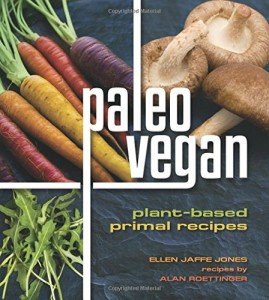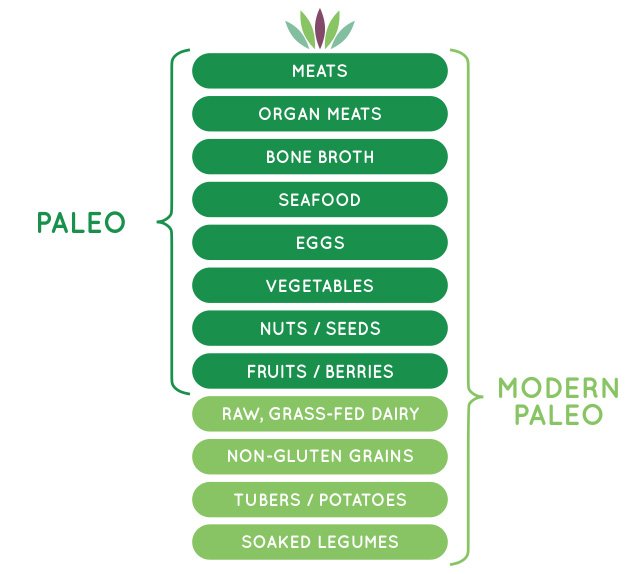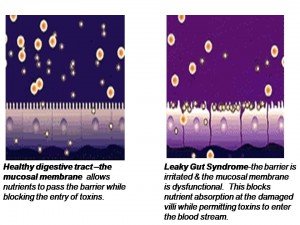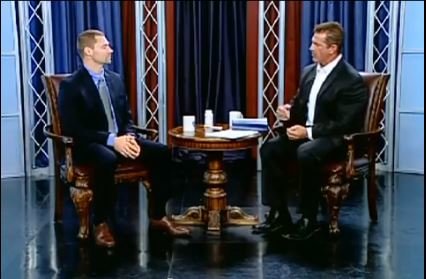Paleo
What is the Paleo Diet, Back Then vs. Now
Simply put, paleo diet is the consumption of food without preservatives and grains. It’s an effort to encourage similar to the diet our stone-age ancestors used to have. The food our ancestors consumed consisted of anything they could hunt and gather – leafy greens, nuts, meats, fishes, seeds, and regional veggies.
What is the Paleo Diet?
Processed food items have become a part of our regular diet and is a type of food that our bodies haven’t evolved to digest properly; foods such as rice, pasta, and bread. Thus, instead of these, we should eat foods that our bodies can digest easily; mostly those food items that occur and are available naturally.
To answer the question, “what is the paleo diet”; it is a big advocate of protein from natural sources – meat, eggs, and seafood. Vegetables and fresh fruits are even more highly encouraged. This gives paleo diet a crossover with veganism, making it a diet rich in both, protein and fiber content, the source of which are vegetables and not grains. You could even call it Paleo-vegan, the perfect combination of mostly plant based foods with the addition of protein and fat as needed.
Our genetics haven’t changed from older times
Tens of thousands of years ago, our stone-age ancestors survived and thrived as hunters and gatherers. Despite a millennia passing since then, our genetics haven’t changed all that much. An average human back then, used to be quite tall, very muscular, extremely agile, and athletic. On the other hand, an average human being now, is out of shape, obese, unhappy, stressed, and losing the battle against a horde of preventable diseases.
What happened?
Agriculture is what happened! Couple of thousand years ago, farming was discovered and soon after that, the agricultural revolution was set forth in full swing. Our species evolved from hunters and gatherers to being farmers. Tribes settled down and formed societies, progress took the fast track, and this is where we humans are today with the advent of industrialization making things even worse.
The underlying issue is that our bodies never really adjusted to the amount of grains we are now farming and consuming. From the beginning of our species to where we are today, 99.5% of the time we have spent on earth has been as hunters and gatherers. Considering this data, notice the significant amount of time our bodies have had to adapt to that lifestyle, with only 0.5% of the time spent as farmers with our diet pattern being abruptly shifted. Just imagine what we are putting our bodies through.
Rather than consuming meat, veggies, and fruits, we have become dependent on grains – rice, bread, corn, pasta, and so on. Moreover, our government recommends 6-11 servings per day, and you can witness for yourself how more and more people are succumbing to obesity.
Something definitely isn’t right; paleo diet is not an effort to go back in time, but a way to restore the natural process of our body; the way it was biologically designed to function. This will allow us to begin living a healthier life instantly.
Fortunately, now that you know what is the paleo diet all about; instead of going on a paleo diet completely, you can simply restrict the foods that aren’t included in the paleo diet. As a result, you may very well be able to stop counting calories forever. Other than stopping you from worrying about calories, this particular diet enables you to eat until you’re full. Additionally, it aids your body in building muscle and losing weight, and gets you in shape way faster than any other diet.
In conclusion, what is the paleo diet, really? It’s a step in the direction human beings were supposed to take well before agricultural revolution, without the presence of preservatives, chemicals, and modified grain content in our foods. Paleo Diet would not only would help in preventing obesity but protect you from all the modern diseases that are the direct result of unhealthy diet patterns that we have formed ever since the agricultural revolution.
What is the Paleo Diet in Modern Times?
Nowadays most nutritionists and health authorities believe and promote how healthy cereal grains are for diseases of all civilizations. The information these bodies are basing their claims on is a product of medical studies that cannot establish the cause and effect. These studies are showing an association that is inverse between western diseases and consuming cereal grains, which aren’t demonstrated via controlled randomized trials.
When one asks, what is the paleo diet, they must first ask what it is not. The standard American diet that Americans consume is not a paleo diet. In fact, this diet is the culprit behind the plethora of chronic health issues that seem to emerge out of nowhere, from diabetes to cardiovascular disease, to even subtly contributing to the growth of cancer cells and tumor tissues. Our diet nowadays consists mainly of genetically modified processed foods, which disturbs multiple mechanisms of our body. The possibility of long-term health with these foods in our daily diet is practically nonexistent. They are certainly not paleo foods.
When shopping at the super market, you can easily identify these types of food. They will usually come in ready to serve containers, laden with preservative and chemicals that an average shopper can’t even pronounce. Just picture how serious the situation has become; more than half the foods we consume are processed and more than half the planet is surviving on them. The increase of diet related illnesses is a clear indicator that something has to change in how we produce the food and how we decide to eat it. Processed food gives birth to food allergies, diseases that are difficult to diagnose let alone treat, and creates more issues for the consumers than solving them. The Paleo diet is a decision one chooses to make on a personal level and implement in their lives.
Consume only organic and pastured meats
We indeed are what we choose to eat, and since we have a choice, you would want to select pastured meat in this modern day and age. Yes, pastured meat may cost a bit more; consider it an investment in not only the environment but also the wellbeing of your body.
What is the Paleo diet and how it prevents food allergies nowadays?
Paleo diet is now more important than ever before, because according to the Food Allergy Research & Education, about 15 million people in America are suffering from numerous food allergies, that includes children more accurately 1 in 13 of them. It rose from by 18% among children over the course of 10 years between 1997 and 2007.
In addition, a paleo diet contains a great amount of fiber rich vegetables. Fiber greatly aids in the function of the gut; in the gastrointestinal tract vegetable fiber ferments, creating fatty acids that promote healthy gut bacteria, and prevents the growth of antagonistic strains of bacteria. What is the paleo diet? It prevents in the development of new allergens.
What is the Paleo Diet in this Modern Day and Age?
Paleo diets have proved to be a remarkable change for quite a lot of individuals. The types of food that are a part of this particular diet make it suitable for everyone, no matter which part of the world you belong to.
Over the last 20 years, human beings are requiring less and less physical activity to get through the day, and consuming processed food on top of such a lifestyle can prove to be dangerous to your health. The consumption of processed foods accumulates harmful fats and problematic toxins in our body. Due to reduced physical movement, these fats and toxins fester into chronic health conditions that are difficult to diagnose until after significant damage has been done.
The Paleo diet can negate the likelihood of obesity and counter all the symptoms that make us lethargic. In addition to that, it will aid in the prevention of numerous chronic health conditions and transform your entire body for the better, while maintaining your body for long-term health.
We are convinced by the media that the world is becoming increasingly health conscious (and that might be true for small percentage of the world’s population), but this is nowhere near to the extent that we’ve been led to believe. Therefore, to not be a victim, could you benefit from the dietary changes now that you know, “What is the Paleo Diet?”
Paleo and Mediterranean Diets Lower Cancer Risk
The Paleo and Mediterranean diets are often talked about for their health promoting benefits. Both are considered to have been used by various populations for many years. The longevity of use of the Paleo and Mediterranean diets has been one of the primary reasons that many still look to these diets when making food choices. Diets that have been around for this length of time certainly should not be overlooked as they seem to have something unique about them that warrant a closer look.
Paleo and Mediterranean Diets Concept
The Paleo and Mediterranean diets are not that dissimilar. Each has its own individual characteristics that make it unique. For example, the Mediterranean diet allows for the inclusion of grains. This is not a part of the Paleo Diet. In contrast, the Paleo Diet can be modified to be higher in fat or higher in vegetables. Yet with each of their differences, there is one common thread in the Paleo and Mediterranean diets that makes them very similar and allows them to offer some of the same health promoting benefits. This similarity is that they focus on food that is nutrient dense and not processed. The food of these diets is what our body demands. It provides the essential elements such as vitamins, mineral and healthy fats that are missing from the standard American Diet. In short, the foods of the Paleo and Mediterranean diets reduce the occurrence of disease, unlike foods of the standard American Diet which promote disease.
Paleo and Mediterranean Diets Validated
Many might argue that the Paleo and Mediterranean diets are fads. To those individuals I would ask, “Is eating real food that can support overall health a fad?” Of course it is not. Each of us knows that eating food that is nutrient dense is always a better choice that eating the refined option. But rather than be dogmatic about the issue, let us take a look at the science. After all, that is what the critics and skeptics are really asking for. They want to see validation that the Paleo and Mediterranean diets have evidence behind them and are not just opinion. Being more of a science minded individual, I can certainly appreciate this point. So with that said, let me refer to the latest article published on the Paleo and Mediterranean diets.
No doubt one of the scariest labels that anyone can be given is cancer. Cancer can be a paralyzing term and can take hold of every aspect of our health from the physical to the emotional. We all know that when possible, the best way to manage a condition is to prevent it. Professional organizations such as the American Cancer Society support the consumption of vegetables and fruits as part of a healthy diet. The use of these foods in the forms that nature provided to use is what supports long term health and lowers cancer risk. This can be seen with the outcome of a recent study showing that the Paleo and Mediterranean diets may be similar in their ability to lower the incidence of sporadic colon cancer. (Am J Epidemiol. 2014 Oct 17.) Additionally, it is also worth noting that if these diets can be used to reduce cancer risk, they can also be used to support an individual’s health during cancer as well as in non-cancerous situations.
Paleo and Mediterranean diets Reign Supreme
The Paleo and Mediterranean diets have stood the test of time as dietary patterns for entire populations. Now with investigation of these diets for modern populations, these diets are beginning to show their benefits in our modern environment. The study mentioned focused on the preventative nature of the Paleo and Mediterranean diets in one form of cancer, ie. colon cancer. However, the benefits of these diets extends not just into prevention of other forms of cancer, but other types of disease as well such as diabetes and cardiovascular disease. Is there a better dietary pattern to adopt? Not likely. You will be hard pressed to find anyone that would recommend consuming refined foods that are laden with chemicals as a preferred alternative to those that are dense in nutrients and support our body’s natural functions.
Paleo Diet Prevents Consumption of Toxic Foods
Our bodies were not meant to eat the diet we are eating..
The more I learn about functional medicine and all of the toxic foods out there and what they can do to our health, the more difficult it is to not be paranoid. It’s like every corner I turn I find something else that offensive to my health.. And I know sometimes I’m right, but also some times I’m making it out to be worse than it is. But for once, I know I’m not being paranoid about one thing, our diet. The way we eat now is nothing like our ancestors ate. We are now eating foods that our bodies are not designed to process. And that is why compared the our forefathers, we have so many diseases and thats why we have so much dysfunction in our bodies.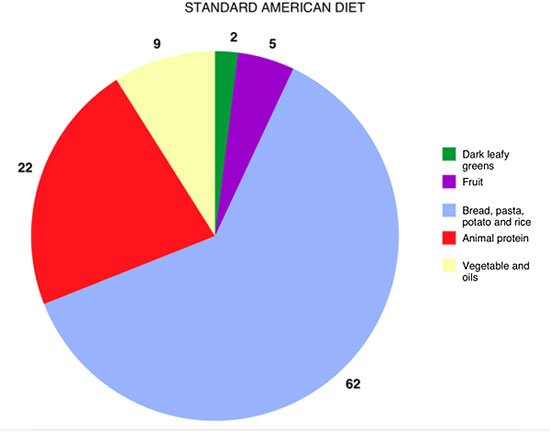
The Standard American Diet (Aka The S.A.D. Diet)
So I’m sure you are wondering how this is possible? If it’s labeled food, and it’s edible, then it should be considered food right? Couldn’t be farther from the truth.. To be honest, what people are eating these days, when they are in a rush, I’d be hard pressed to call food. It carries almost no nutritional value. And with that said, there are many foods that we should not eat as they don’t promote long term health. In fact, many of them promote disease when consumed regularly.
Are you sure that your food is really food?
Do you know what is the in the food that you are consuming? Another good question is do you really know what you are consuming? Is it what you think it is? I bet you may be surprised to find the answers to some of these questions. So much of our food supply is contaminated with chemicals in ways we would not even expect. From growth hormones to pesticides and herbicides, the food we eat leaves our detoxification system begging for support. Add to this the stripping of valuable nutrients and fiber and you are left with . . . . Well I’m not totally sure what the best description should be, but it hardly resembles the food you would find in nature.
Our food supply has been altered
Food as we have come to accept it, is the byproduct of industrialization. We have let “big money” take over agriculture and control the food supply. We were duped into thinking that big agriculture was the best way to feed the population. This is problematic on a number of levels, but one of the many reasons is that you are getting food that is adulterated all the way down to the genetics. The rouge science of genetic modification has created foods, and I use that term very loosely, that are not tolerated by our bodies any longer. In fact, these are the foods that are likely most responsible for the rapid increase in autoimmune disease in such a short period of time.
The Paleo Movement
If you are beginning to feel a little anxious about the food you eat every day, you should. But before you become too uptight about this topic, know that there is an answer. There is an army of us out there that refuse to accept the fact that we should eat what we have been told by the government and FDA. Rather, we prefer to eat the Paleo Diet, the diet of our ancestors that kept them free of disease. The Paleo Diet is optimally implemented with the consumption of organic sources, but if you cannot afford organic, you can still derive great benefit. The longer I practice, the more I am convinced that for the average portion of the population, the greatest insults come for grains and dairy. These foods as they are produced now are different from what our forefathers had in numerous ways.
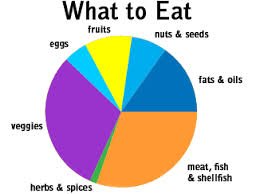 There is a better way
There is a better way
As we know the Paleo Diet mostly focuses on eating non grain plants and animals, and the results of that diet are very very different compared to the results from the typical diet we consume in this country. My main goal is to make sure you understand that you don’t have to eat that toxic mess that is called our food supply, you can choose to take a different path. Just because those lifeless foods are in front of you, or cheaper, or easy access, does not mean you have to eat them. You can choose to take the extra step or put in a little more effort, after this is your health we are talking about. Instead trust the Paleo Diet, follow it and you will see results. I should know, it’s the only way I eat now. The Paleo Diet is the foundation of all diets ever existing for mankind, it has literally been proven for thousands of years to be the best diet for humans. It will free you of this toxic burden, guaranteed.
Gastrointestinal Health
Without a healthy gut, nothing will function properly
Change is inevitable, we all go through it sometimes on a larger scale sometimes on a smaller scale. Most changes are good, some are not. We have gone from living a hunter-gatherer lifestyle, to agrarian, and eventually for too many of us have become a city dweller society, and with these changes we have undergone changes within our bodies that have had an adverse effect on our health in general. Considering that our GI system has a huge impact in all areas of our health, having a healthy GI tract is very necessary. The GI tract is the keystone for the health of the rest of the body. Without a healthy gut, no other system in our bodies can be expected to function normally. So you can see how very very important it is to keep the gut functioning the way it should, and if you are trying to improve your health your GI tract cannot be discounted.
The Standard American Diet
To really understand how the evolution of human foods have affected our gut, all we have to do is look at our diets. The negative affects of the Standard American Diet (or SAD diet) creates problems and dysfunction for every aspect of our health. For most people this is the very reason that causes the GI tract health to be so unhealthy and damaged. The SAD contains foods that are the very cause of the sluggish bowel movements, and all the refined meats, the sugars, bad fats, snacks and any refined foods really, with minimal fiber, causes the bowels to become acidic. When this happens the lining of your bowels become damaged and this is where the entire function of your gut is, in the mucus lining. When your lining is damaged, your colon cannot do their job. This includes acting as a primary barrier against microorganisms and undigested foods, absorption of vitamins, minerals and proteins and supporting the health of the immune system.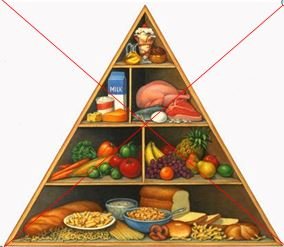
What is Leaky Gut?
Once the bowels begin to move less than 2-3 times each day, putrification of proteins begins to occur resulting in the production of acids. The resulting environment is one that is inhospitable to the resident beneficial bacteria known commonly as probiotics. It is these bacteria that act as part of the immune system and maintain the balance of “good” vs. “bad” microorganisms in the GI tract. With declining numbers of probiotics, the growth of harmful microorganisms increases, resulting in a greater production of acid. Additional acid further compromises the GI lining, compounding the situation and making the integrity of the lining worse. As a consequence, leaky gut develops.
Leaky Gut is more appropriately termed hyperpermeable gut, meaning that things are allowed to pass through more easily than they should. A primary characteristic of the GI tract is a process known as selective permeability. This means that various substances have to carried across the GI lining rather than just being able to filter directly across. Simply, they have to ask for permission. If the substance checks out okay, it is given permission to cross. If it does not check out okay because it is too large or looks foreign, it is denied. Hence, the GI lining is selecting what it wants to grant access. These are the events that take place under ideal circumstances.
It’s like pouring water through a pipe that has slits in it. It leaks.
Yet, we know that most individual’s GI tracts are not healthy because of things such as diet, antibiotics, high stress, and poor brain signaling, to name just a few. When this is the presentation, selective permeability is lost and for this reason we then label the GI tract as hyperpermeable. In this state, the cells of the cells that make up the GI lining are not longer touching each other and have gaps between them, whereas they should all be touching tightly. You can akin this to pouring water through a pipe that has several slits in it. Everywhere a slit is present, water will leak out and there is no way to stop it. This is the case in a leaky gut presentation. Foods, microorganisms, and anything else in the GI tract are leaking past a barrier that they should not.
Without a healthy gut, your immune system weakens.
While a leaky gut has many consequences, the most significant is the loss of regulation of the immune system and the resultant inflammation. From this, a very dire situation can result since on average 60-70% of the immune system is found in and around the GI tract. When the immune system becomes overactive, inflammation is the consequence. It is this scenario that is part of the cause, and at other times the sole cause, in many chronic disease states.
Leaky gut is just the beginning of your worries..
Many diseases states have been shown to be linked to GI dysfunction. The common thread is the inflammatory cascade that is secondary to the dysfunction. It would be easy to see a link in leaky gut and GI disorders such as Crohn’s Disease and Ulcerative Colitis. However, the state of health does not have to be this grim to have an active leaky gut. More common day to day presentations would include skin disorders ranging from acne to psoriasis, a weakened immune system, brain fog and sinus congestion or infections. However, leaky gut has also been linked to conditions such as cardiovascular disease and cancer. In fact, we now know that the cholesterol and blood fat model of cholesterol has become secondary to the inflammatory model with the GI tract being a likely source of the inflammation. Ironically, detoxification programs incorporating proper bowel function often show dramatic reductions in elevated cholesterol levels. The most complex category of conditions associated with leaky gut is autoimmunity. Loss of regulation of the immune system causes it to turn on itself leading to damage of the body’s own tissues by a system designed to protect it.
You can only heal your gut with the right nutrients
Identification of a hyperpermeable GI state is best done through specific testing. Ideal methods include stool and monitoring of antibodies to foods and human tissues. These antibodies should only be produced against what our immune system perceives as harmful, not against food and our own body. Diagnosis and treatment of a hyperpermeable gut often centers around bringing back balance through restoring the GI lining, replacing the necessary missing constituents such as digestive enzymes and acid and probiotics, and eradicating any infections when present. One cannot hope to resolve a chronic disease state and heal a leaky gut by not addressing the necessary components listed above. Often in this state, a reasonable degree of inflammation exists at the GI lining. To allow the cells of the GI tract to move closer together and seal the lining, it becomes necessary to add the nutrients in that this environment is dependent on as well as to soothe any areas of inflammation. Oddly enough, this is something that prescription anti-inflammatories are incapable of as many of them actually breakdown the lining of the GI tract further and have been shown to lead to bleeding in some instances.
But what leads to the leaky gut in the first place?
If this was driven by a poor diet, this must be remedied by dietary modification consisting of consumption of high foods rich in a variety of nutrients, high in fiber, low in sugar and rich in healthy fats. When infections are identified, these must be eliminated. Such infections may include bacterial, fungal, or parasitic. These can be elusive at times, but persistent treatment pays off and eventually results in their elimination. Common to find along with an infection is a decrease of the probiotics. Probiotics being bacteria are susceptible to the effects of antibiotics and sometimes other antimicrobial treatments, yet they can also proliferate themselves once enough of them are in the GI tract. Building up these colonies adds stability to the body by strengthening the immune system, producing nutrients such as vitamins, and inhibiting the growth of foreign microorganisms. One of the factors that can lead to the presence of an infection is lower levels of acid production. Acid has been made to be the villain in our society, yet it acts as our first line of immune defense in the GI tract and initiates the protein breakdown process. When combined with the enzymes produced in the mouth and pancreas, the digestive juices breakdown foods into their smallest possible components causing them to be non-reactive to the immune system.
Your brain, hormones and gut are all connected
Just as important for a healthy GI Tract is healthy brain and and stress functions. When you are experiencing a lot of stress, you are also weakening your immune system because the lining of your intestines, the protective mucus lining inside your gut, will start thinning which in turn lowers your immune cell count gradually. When that mucus lining is damaged, it also makes it difficult for the intestines to repair themselves. All these dysfunctions are connected, and when you are having this much dysfunction in your gut, your brain will be impaired as far as signaling to create the digestive juices needed. When you get to this point you need to look outside of the GI tract to correct the functions.
As you can see based on what I have been discussing here, all of our systems are connected to our GI Tract. The GI system is of utmost importance when it comes to delivering the nutrients each system needs to keep our immune systems functioning correctly. It is a portal that can accept and reject the things we need or don’t need. It is the gateway to our bodies. If you are setting out to address a condition you may be having, the GI tract has to be considered. Through a proper diagnosis, with the right testing to make sure all bodily functions are considered, a precise treatment plan can be created that can specifically start fixing the many aspects of your GI function inside and outside of your GI Tract.
Why am I always tired?
Fatigue is Rampant
If you are fatigued, you are not by yourself. Fatigue is one of the most common complaints presented to healthcare practitioners. Just look around on the shelves in checkout lines in the grocery stores. They are filled with energy support products. Better yet, visit your local convenient store and look in the cooler. You will see an entire section devoted to energy drinks. Are we all fatigued? Indeed we are.
I often ask my new patients if they experience mid-afternoon fatigue. A surprisingly high number answer that they definitely see a slump in energy in the afternoon. Many times they will go on to tell me about fatigue happening at other times as well. Knowing that I have hit on a key concern that they might not have even realized was a problem, the quote that I often get in response is, “Why am I always tired?” There are many answers that could be given for this question. However for many, the answer starts with the diet.
The Forgotten Effects of Fatigue
I am going to share something with you that most professionals know about, but rarely think about in terms of fatigue. If you feel fatigued on a day to day basis and are asking yourself, “Why am I always tired?”, something that you should know about that is the fatigue that you are feeling is happening in all areas of your body. For example, the brain is not producing energy and your mental function is not 100%. This results in things like brain fog and lack of mental clarity. Another good example would be the cells of the liver, which are needed for detoxification and removal of harmful chemicals from our body, would not be able to work as efficiently.
The Link Between Diet and Fatigue
Are you eating real food? That may seem like an odd question to ask, but unless you are eating a diet of unprocessed foods that have a high nutrient content, your diet is likely part of the problem. The diet is directly related to fatigue. Foremost, conquering fatigue means having a steady source of nutrients that the body can use to produce energy. These include such things as vitamins, minerals and antioxidants. Diets low in these types of foods leave the body lacking in its ability to function. If you don’t have adequate vitamin and mineral status, you don’t produce energy. The key to producing energy is being able to take living food and convert it to molecules of energy. When you are consuming a diet high in vitamins, minerals and antioxidants, you will produce energy more readily. All of those quick fix solutions you see on the shelves will be a distant memory.
This is not the only way that diet is related to fatigue. Diets high in carbohydrates promote fatigue also. This happens for multiple reasons, but one of the most common reasons non-Paleo diets create fatigue is as a result of the blood sugar roller coaster. Eating more carbohydrates than you need on a daily basis causes highs and lows in blood glucose that prevent the production of consistent energy by the cells. If this pattern continues, it can lead to diabetes. Yet well before the development of diabetes, you will notice lulls in energy.
Are You Fatigued?
Here are a couple of key questions to ask yourself.
1. Do I have less energy on a day to day basis than I did 1 year ago?
2. Am I less productive during the day than I have been in the past?
3. Do I still feel unrefreshed when waking in the morning?
4. Do I have a drop in energy either mid-morning or mid-afternoon?
5. Do I often start my day with a cup of coffee to get me going?
6. Do I routinely consume energy drinks to give me a pick up during the day?
7. If I start reading, do I easily fall asleep?
8. Do I get tired when I drive?
Take the First Step to Battling Fatigue
The first step to beating fatigue is changing your diet. Energy is a product of good bodily function. Just like you are not going to get the best function out of your car with inferior components in it, you are not going to get optimal function out of the body without putting the best foods in. This is where the Paleo Diet fits in. High in nutrients critically needed to support energy production and devoid of non-living foods that rob your body of nutrients, you will soon find that the Paleo Diet will have you feeling like a fine tuned sports car. Moreover, the blood sugar highs and lows that are so commonly a part of fatigue will soon go away and you will find yourself more productive and feeling like your old self again. Now, if you are not sure where to start, the best advice I can give is to have a resource that will provide you with several Paleo options to get you started on the right track. When you do this, you will soon wonder why others aren’t making the change and feeling the same new spark of energy that you have found!
Could Taking Omega 3 Fats Help Reduce Your Cancer Risk?
The Cancer Scare
Cancer is on the rise. Most all of us know someone that has had cancer. It can be the most dreadful thing to hear from a doctor. “You have cancer.” Those three words invoke more fear than almost anything else. The very thought of the reality of those words sends chills up your spine. And if it is you that hears it, all you can think about are all the precious aspects of your life that you may no longer be able to experience or may soon lose. Cancer is without question a scary situation, regardless the type and stage.
Why Are we not Winning the War on Cancer
Cancer is becoming a mainstay word in our society. It comes up more frequently in the healthcare arena than it should. There has long been a war on cancer. In fact, Richard Nixon even signed the National Cancer Act of 1971 to more or less document the initiation of this initiative. In the 40 plus years since that time, little has been done to decrease the incidence of cancer. We are seeing new improvements and better management of the condition. Yet with such advancement, we are failing to address the underlying causes of cancer. This is no different than most other conditions. Traditional medicine ignores the dysfunction that leads to the disease. Why do we wait when we can be proactive? We know the risks, so why not act on them?
The Statistical Paradox
Add to this conundrum the paradox that some say we are winning the battle on cancer. To understand this comment, one must understand the definition of success. Success is defined in some circles as reducing the death rate associated with cancer. This is a noteworthy achievement and one that is appreciated by nearly all that have been diagnosed. However, what we do not see in these number is the case of newly diagnosed cancer. According to the National Cancer Institute Cancer Trends Progress Report – 2011/2012 Update, there were roughly 474 new cases of cancer per 100,000 individuals. In a population of almost 314 million people, that equates to 1,488,360 newly diagnosed cases of cancer in one year. I ask you. Are we winning?
Can Anything Be Done?
With such daunting numbers, it may seem like almost nothing can be done. However, the advantage of having medical science on our side is that researchers have been able to define many contributing factors. This means that we do not have to proceed blindly, but rather can use the information of numerous creditable studies to know where to best support and protect ourselves. One of the least controversial and most well accepted risk reduction techniques is omega 3 fatty acids.
Omega 3’s Provide Hope
The American Journal of Epidemiology states, “These results suggest that intake of long-chain omega-3 fatty acids may reduce risk of total and cancer-specific mortality.” (Am J Epidemiol. 2014 Feb 3). This furthers the point that risk of death associated with cancer can be reduced. Moreover, there is equal evidence stating that there may be a protective role associated with the consumption of omega 3’s with various types of cancer.
How Omega 3’s Benefit
Omegas 3’s have clearly established themselves as having a role in protection against cancer as well as other aspects of this life-threatening condition. Even in light of the occasional controversial media piece, omega 3’s are one of the most well accepted intervention strategies to protect not only against the ailments of cancer, but multiple other conditions as well. With their well-known role as an anti-inflammatory and immune system modulator, and their difficulty in obtaining adequate levels in most individuals diets, you will be hard pressed to find a better start to your cancer prevention strategy than the incorporation of omega 3’s.
The Caveman Diet is about Real Food Consumption . . . Period!
Caveman Diet??!
Have you ever wondered what a caveman ate? To be honest with you, I have not put much thought into it myself. That may seem odd coming from the Paleo Doctor. After all, shouldn’t I be researching this kind of stuff so I can tell you exactly what Paleolithic people indulged in so we can mimic it? The truth is, it never really seemed like it needed a lot of thought. The answer just seemed obvious to me. Cavemen did not have vast options to choose from. Not to say they did not have a large variety of foods. This they did have. However, there was not a huge selection of locations from which to obtain food. The choices were simple. You ate off of the land or you consumed an animal of something that came from an animal.
What kind of foods did they eat?
There seems to be controversy about what the Paleo, or caveman, diet consisted of. Some would suggest that it was higher in protein, assuming that most of the food was animal derived. In contrast, others would lead us down the path implying that our forefathers ingested a higher amount of plant derived foods. The assumption here is that plants were more plentiful and easier to obtain. Thus, they were more readily consumed. As you can see, arguments can be made for both ends of the spectrum. Even today, in cultures that remain less civilized and closer to their ancestral heritage and customs, eating patterns are observed that support both sides. There does not appear a clear message about what the caveman diet should be.
Let me tell you what they didn’t eat
If at this point you are starting to feel confused about which direction to take with your diet don’t. In fact, we have yet to point out the one fact that will make implementing the Paleo diet a cinch! Let’s revisit our caveman in their environment. Rather, let’s examine our forefathers across many different cultures. The one consistency among all such individuals is they lived off of what they had access to. Regardless of where they were from, that meant they ate what they could pick or gather and catch or kill. Thus, it had to be real food. It was not processed, nor preserved. It was in the natural state that God provided it. Thus, the common thread in caveman diet is not that it is high in protein, low carb, or based on plants. No! The single most important fact to take away from the Paleo diet is that it is the consumption of real food.
Dead food means devoid of nutrients, live means full of nutrients
Eating real (live) food means your are providing the body with the most perfect fuel source that you could offer it. The body functions at its best when it is given the right nutrients without the interference of damaging and quite frankly, dead foods. Would a caveman have eaten a food with no life to it? Absolutely not! In fact, such things did not even exist. There was no necessity to go out of ones way to consume healthy food. All food was healthy. Ironically, chronic disease did not exist either. I say all of this to simply say, don’t get bogged down in the argument of what constitutes the caveman’s diet. High protein, high fat and high plant could all be part of the caveman’s diet. It really just depends on the place of origin. Moreover, the body can function well on just about any of these dietary regimens within reason.If you need healthy Paleo ideas, you can always get a Paleo Cookbook for a good Paleo recipe. For yourself, make life easy and just eat real food.
Exercise is Part of the Paleolifestyle, Regardless of Age (by Mark Sherwood)
Generational Wellness
As I travel around the world, I have become somewhat of a people watcher. Obviously my passion for physical wellness and my compassion for those who struggle with weight issues has become a part of the lens through which I often view people. Though my blogs are intended to reach the masses, this one is specifically geared towards parents and those who wish to be someday.
Let me begin by describing a heartbreaking scene. I am sitting in an LAX terminal as I observe a father and mother walking towards me accompanied by their children. I estimate the parents’ age to be in their 40s with their two girls’ ages to be in their 20s. They all were visibly showing discomfort as they walked. Additionally, all four were at least 150 pounds overweight. The daughters were even larger than their mother. I must admit a deep sense of sadness I felt as I thought about what I was really seeing. It was much more than just a severely obese family. It was a family that undoubtedly will have to deal with the enhanced risk of disease and death at a much earlier age than should be expected. I thought about these daughters one day having children. I even wondered what others may be thinking. Do we really treat ‘those people’ different? Will they have to purchase two seats on the airplane? I thought about when/how this generational pattern of ‘un-wellness’ began. When will it end? Will it ever?
Let’s face some statistical truths. Today, nearly 4 in 10 Americans are obese. Predictions are dire with the obesity rate rising in teens and preteens. Someone has to step up and break the cycle of generational ‘un-wellness.’ Parents (and those who wish to be), YOU ARE THE ONES called to step up and break this dangerous cycle. Do something now in regard to changing your life, extending the quantity of your life, enhancing the quality of your life, and starting a generation-changing pattern of wellness. Here are some things you can begin right now:
- Get a wellness check-up with a doctor that knows functional medicine.
- Start a walking / exercise program and progress slowly, but consistently.
- Gradually change your nutritional habits by adding more natural foods and vegetables. The Paleo Diet is a good place to start.
- Drink more water making it your main liquid intake.
- Seek the advice/services of a trusted wellness professional who lives out what he/she teaches
- Don’t take shortcuts or fall for quick fix gimmicks.
This subject, I realize, can be very personal and very emotional. However, when we are speaking about generations, we are speaking about a very real subject that affects OUR REAL FUTURE.
Please take these few words seriously and pass them on to those you know who need to hear this. It is coming from someone who really cares. This may be uncomfortable and toe-crunching to talk about, but it is badly needed across our world. This is not an advertisement for my services, but because of my passion, I will help as a trusted wellness professional. I threw that out there to eliminate an excuse (e.g. no person cares or is willing to help) people often use. Friends, excuses will get us nowhere. This time, this day, this hour is the time for parents (and those who wish to be) to stop making excuses and passing the buck. I challenge you to make the commitment to be THE ONE to begin a pattern of generational wellness in your family.
Here’s to being 4EverFit!
The Key to Making the First Step into Exercise Successful (by Mark Sherwood)
A Solid First Step
“I need to start exercising; I know that!” I hear these words literally every place I speak. It seems that even though many people are aware of the problem (i.e. obesity, sedentary habits, poor nutrition, and poor health are all on the rise), few take the steps necessary for correction. I really believe that most reasons for not taking those steps are found somewhere between internal feelings of overwhelm, fears of failure, and uncertainty about where exactly to begin.
The first step is the most important. This step must be certain, sure, and solid. It cannot have question and must succeed. With 360 degrees of option in that first step, there are many choices of direction, but only a very few will get you going the right direction.
Ok, so here is a simple breakdown of a solid first step – 4 simple guidelines everyone can do at a price everyone can afford:
- Purchase a quality nutrition guideline. I recommend Paleo Transitions by Dr. Hill.
- Make gradual changes to your diet. Start small by adding one quality (paleo) meal daily along with adding two servings of vegetables per day at least 5 days per week. Don’t start worrying about taking things away just yet.
- Drink more water. A good rule of thumb is to divide your body weight by 2 and drink at least that many ounces of water daily.
- Begin a simple, structured, low-resistance strength, flexibility, and cardiovascular program at home. Don’t try to visit a gym just yet. I recommend my 4E Fitness BASIC and INTERMEDIATE DVD programs. You can even do the ADVANCED if you have been consistently exercising. They are affordable and very effective with amazing flexibility on when/where they can be used. Just pop them in a laptop or DVD player and follow along. A simple walking program is included.
For at least 6 months, follow these 4 simple guidelines that encompass the all important ‘first step.’ You will have made that first step successful, solid, and sure. It will be time well spent and money well invested. It will change your life for the better. This is a price you cannot afford ‘not’ to pay. Your health is extremely important! Don’t wait! Take that first step now – not tomorrow – but now!
We don’t know what tomorrow holds, but we do have the chance to make the most of NOW. As you read this article, please know that I believe in you, and I believe that this first step (described above) is a step in which you will be successful.
Here’s to being 4ever fit!
